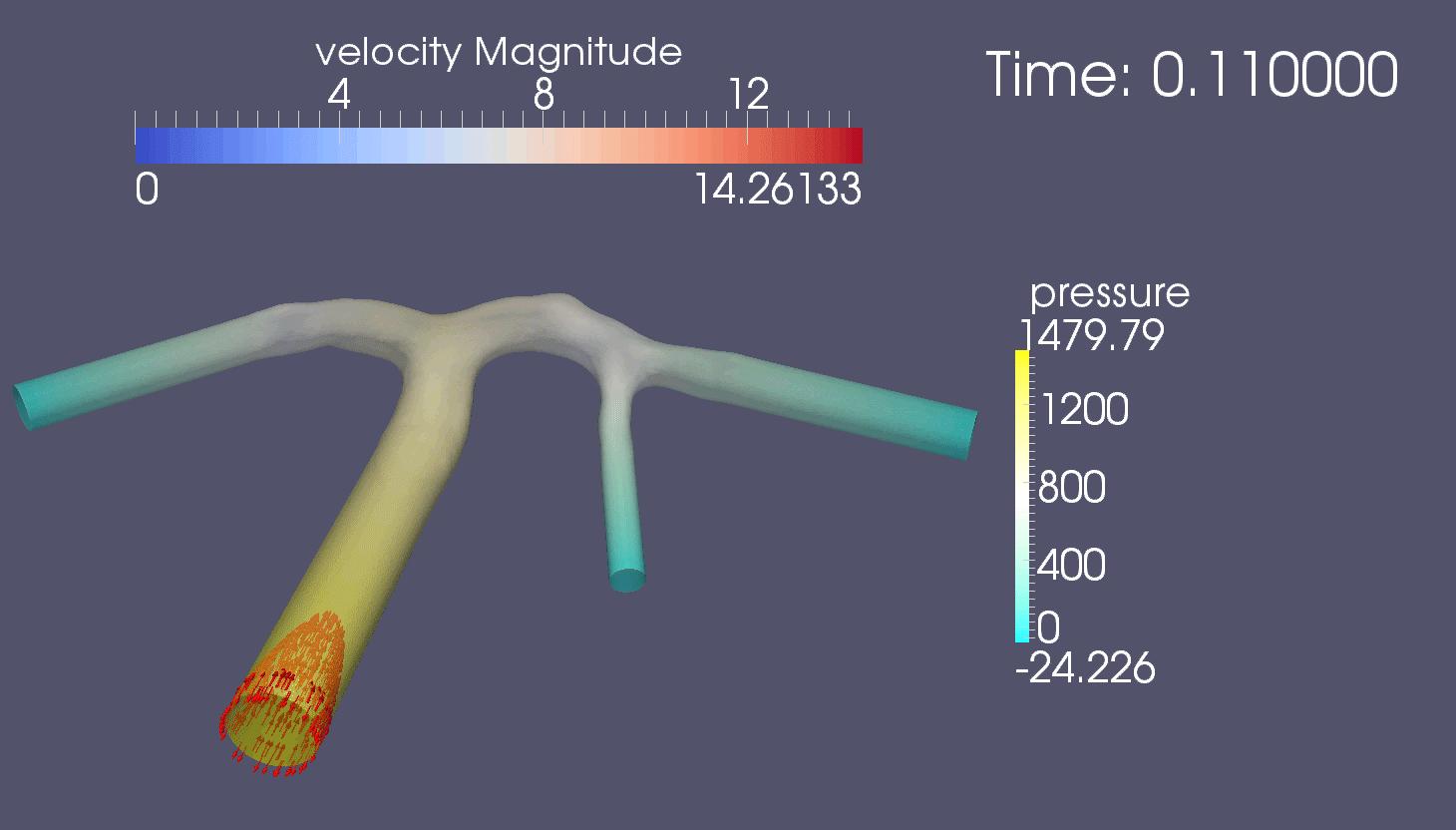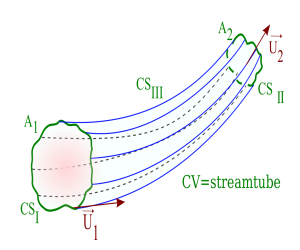- 23 April 2024
- 376
Fluid Dynamics Unveiled: The Secrets of Motion

Fundamental Concepts
At the heart of fluid dynamics lie fundamental concepts such as viscosity and fluid flow. Viscosity refers to a fluid’s resistance to flow, while fluid flow describes the motion of fluid particles. Additionally, fluids can be classified based on their compressibility—whether they maintain constant density (incompressible) or not (compressible).
Types of Fluid Flow
Fluid flow can exhibit various characteristics, including steadiness and turbulence. Steady flow remains constant over time, while unsteady flow fluctuates. Furthermore, flow can be classified as laminar (smooth and orderly) or turbulent (chaotic and unpredictable), depending on the fluid’s velocity and viscosity.
Equations Governing Fluid Dynamics
Mathematical equations such as the continuity equation and the Navier-Stokes equations govern fluid dynamics. The continuity equation ensures mass conservation, while the Navier-Stokes equations describe the motion of fluid particles, accounting for forces such as viscosity and pressure.
Fluid dynamics finds widespread applications in engineering disciplines such as aerodynamics and hydraulic systems. Engineers use Biofluid dynamics principles to design efficient aircraft, optimize turbine performance, and develop hydraulic machinery for various industrial applications.
Natural Phenomena
In nature, fluid dynamics manifests in phenomena like ocean currents and atmospheric circulation. Understanding these natural processes is crucial for predicting weather patterns, studying climate change, and mitigating the impact of natural disasters.
Challenges and Complexity

Fluid dynamics poses significant challenges due to its nonlinear behavior and boundary layer effects. Nonlinear phenomena, such as turbulence, are notoriously difficult to model accurately. Moreover, boundary layer effects near surfaces can significantly influence fluid flow patterns.
Simulation and Modeling
Advances in computational fluid dynamics (CFD) and finite element analysis (FEA) have revolutionized the simulation and modeling of fluid flow. These techniques allow engineers and scientists to predict fluid behavior, optimize designs, and explore complex flow phenomena in a virtual environment.
Current Research and Innovations
Researchers are continually pushing the boundaries of Biofluid dynamics , exploring topics such as nanofluidics and biofluid dynamics. Nanofluidics involves the study of fluid behavior at the nanoscale, with applications in areas like drug delivery and nanotechnology. Biofluid dynamics focuses on understanding the flow of biological fluids within the human body, informing medical diagnoses and treatments.
Environmental Impact
Fluid dynamics plays a crucial role in environmental issues such as climate change and pollution dispersion. Studying fluid flow patterns in the atmosphere and oceans helps scientists better understand the Earth’s climate system and predict the effects of anthropogenic activities.
Fluid Dynamics in Medicine
In medicine, fluid dynamics is essential for understanding physiological processes such as blood flow dynamics and respiratory mechanics. Researchers use dynamics of fluids principles to develop medical devices, diagnose cardiovascular diseases, and optimize drug delivery systems.
Future Perspectives
The future of fluid dynamics holds exciting possibilities, with emerging technologies promising new insights and advancements. From harnessing quantum effects in fluid systems to developing innovative propulsion technologies, researchers are exploring novel avenues that could reshape our understanding of fluid behavior and its applications.
Educational Resources
For those interested in learning more about dynamics of fluids, numerous educational resources are available, including textbooks, online courses, and practical experiments. Engaging with these resources can provide valuable insights into the principles and applications of fluid dynamics, catering to both students and professionals alike.
Career Opportunities
Fluid dynamics offers a diverse range of career opportunities, spanning academia, research institutions, and industry. Whether pursuing a career in academia as a dynamics of fluids researcher or working in industries such as aerospace, automotive, or biomedical engineering, individuals with expertise in fluid dynamics are in high demand.
The Cosmic Ocean: A Vast Expanse
Imagine the universe as an ocean, stretching out infinitely in all directions. Like the surface of a vast cosmic sea, space-time undulates and bends under the influence of mass and energy. Just as waves ripple across the surface of water, cosmic phenomena propagate through the fabric of space-time, creating a dynamic and ever-changing landscape.
Galactic Rivers and Streams
Within this cosmic ocean, galaxies drift like majestic ships, carried along by the currents of gravity. These galactic rivers and streams flow through the vast expanse of space, merging and diverging in a complex ballet of cosmic proportions. Gravitational forces, the invisible threads that bind the universe together, dictate the motion of these celestial behemoths.
Tides of the Cosmos: Impact on Celestial Bodies
Much like the ebb and flow of tides on Earth, cosmic tides exert a profound influence on celestial bodies. Planets, stars, and even entire galaxies experience the subtle pull of these cosmic forces, shaping their orbits and trajectories. From the gentle tug of a neighboring star to the cataclysmic embrace of a black hole, the effects of cosmic tides are ubiquitous throughout the universe.
Whirlpools of Creation: Birth of Stars and Galaxies
In the depths of space-time, cosmic whirlpools emerge, giving birth to stars and galaxies. These swirling eddies of gas and dust coalesce under the influence of gravity, forming the building blocks of the universe. Cosmic turbulence fuels the process of star formation, shaping the landscape of galaxies and giving rise to the vast array of celestial wonders that populate the cosmos.
Navigating Cosmic Currents: Interstellar Travel
As humanity ventures forth into the cosmos, we are faced with the challenge of navigating its vast currents. Interstellar travel holds the promise of exploration and discovery, but it also presents formidable obstacles. By harnessing the power of cosmic currents, we may one day traverse the depths of space, unlocking the secrets of distant worlds and civilizations.
The Dance of Black Holes: Cosmic Vortices
At the heart of many galaxies lie black holes, cosmic vortices of unimaginable power. These enigmatic entities warp the fabric of space-time, creating swirling maelstroms that devour everything in their path. From the gentle spiraling of matter into a stellar black hole to the violent collisions of supermassive black holes at the centers of galaxies, the dance of black holes shapes the cosmic landscape in profound ways.
Cosmic Weather Forecast: Predicting Space-Time Events
To unravel the mysteries of the universe, scientists rely on a variety of tools and techniques to study cosmic fluid dynamics. From advanced telescopes to sophisticated computer simulations, researchers are able to predict and model the behavior of cosmic phenomena with unprecedented accuracy. By peering into the depths of space-time, we gain insight into the inner workings of the cosmos and glimpse the wonders that lie beyond our cosmic horizon.
Exploring the Multiverse: Beyond Our Cosmic Horizon
Beyond the boundaries of our observable universe lie realms uncharted and unknown. Speculations abound regarding the existence of parallel universes and alternate realities, each with its own set of physical laws and cosmic constants. The fluid nature of the multiverse opens up a vast frontier of exploration, offering tantalizing glimpses into realms beyond our wildest imagination.
Chasing Cosmic Ripples: Gravitational Waves
In 2015, scientists made a groundbreaking discovery that confirmed a prediction made by Albert Einstein a century earlier: the existence of gravitational waves. These elusive ripples in space-time are produced by cataclysmic events such as the collision of black holes or the merging of neutron stars. By detecting and studying gravitational waves, researchers are able to probe the depths of the universe and gain new insights into its underlying dynamics.
The Flow of Time: Temporal Dynamics in the Cosmos
Time, like a river, flows inexorably through the cosmic landscape, shaping the course of events and the destiny of galaxies. Yet, in the realm of space-time, time is not an absolute constant but a malleable dimension, subject to the influence of gravity and velocity. Time dilation, a phenomenon predicted by Einstein’s theory of relativity, leads to strange and fascinating effects, such as the slowing of time near massive objects or the synchronization of clocks in motion.
Cosmic Pioneers: Explorers of the Fluid Universe
Throughout history, scientists and researchers have sought to unravel the mysteries of the cosmos, pushing the boundaries of human knowledge and understanding. From Galileo’s observations of the heavens to the recent discoveries made by space telescopes and particle accelerators, each breakthrough brings us closer to unlocking the secrets of the universe. As we continue to explore the fluid universe, we stand on the shoulders of giants, charting a course towards new frontiers of discovery.
Harmony in Chaos: The Beauty of Cosmic Flow
Amidst the chaos of the cosmos, there exists a profound sense of harmony and order. From the elegant dance of celestial bodies to the intricate interplay of cosmic forces, the universe reveals itself as a symphony of motion and energy. By embracing the beauty of cosmic flow, we gain a deeper appreciation for the interconnectedness of all things and the awe-inspiring majesty of the cosmos.
Dark Energy and Dark Matter
Dark Energy and Dark Matter , two enigmatic components of the cosmos, exert a powerful yet invisible influence on the dynamics of the universe. Dark matter, which outweighs visible matter by a factor of five to one, binds galaxies together through its gravitational pull, while dark energy drives the accelerated expansion of the universe. Together, these unseen currents shape the cosmic landscape in ways that challenge our fundamental understanding of reality. let us marvel at the beauty and complexity of cosmic dynamics and strive to unlock the secrets of the cosmos.

